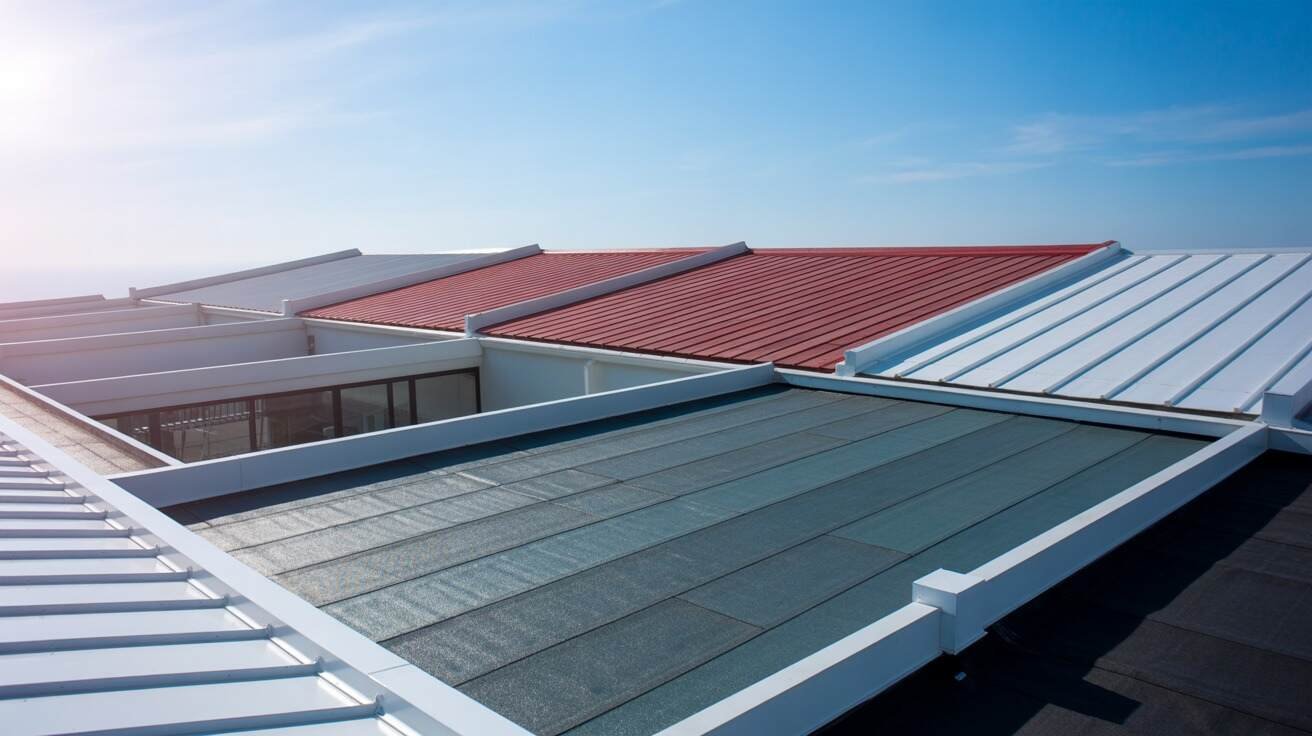Out of all the elements in protecting your business premises, the roof serves one of the most important roles. It guards your building against harsh weather conditions, water, and temperature changes and provides a serene indoor environment.
In the last two years, the membrane roofing system has been one of the top choices among commercial buildings in New Zealand due to its extended lifespan, energy efficiency, and better waterproofing properties.
If you are thinking of installing a commercial membrane roof on your company, this guidebook will acquaint you with the kinds, advantages, and maintenance practices—so that you can wisely invest in improved roofing.
What Is a Membrane Roofing System?
A membrane roof system is one of the roofing systems that is specifically meant for flat or low-slope commercial roofs. In contrast to the conventional roofs that feature the technique of tiling or shingling, membrane roofs consist of flexible and waterproof materials applied in entire sheets.
There are no joints and therefore the structure becomes impossible for leakage and is hence most suitable for massive industrial and commercial complexes.
Membrane roofing NZ systems are ideal for Auckland’s fluctuating weather, with great levels of durability against heavy rain, high wind, and UV sun. Membrane systems are light, energy-saving, and low-maintenance when compared to traditional roofing.
Commercial Roofing Membrane Systems Types
There are many different types of commercial roofing membranes—each with its own set of benefits based on your building, location, and requirements.
1. TPO (Thermoplastic Polyolefin)
TPO is one of the leading materials used in NZ roof construction with membrane. TPO is a one-ply membrane heat-welded across seams to form a strong, impermeable surface.
TPO stands out by a distinct bright white color, reflective against the sun, and keeping cooling costs low during New Zealand summers. TPO is UV ray, mold, and puncture resistant and is thus most appropriate for energy-saving commercial buildings.
2. PVC (Polyvinyl Chloride)
PVC roofing is a common commercial roof membrane, especially for buildings exposed to chemicals, oil, or extreme conditions. PVC membranes are much improved in watertightness and resist fire, UV, and chemical degradation. PVC membranes are abrasion-resistant in the long term even at extreme temperature fluctuations.
3. EPDM (Ethylene Propylene Diene Monomer)
EPDM, or more accurately “rubber roofing,” is probably the most long-lasting material employed in membrane roofing NZ. It’s really pliable, simple to install, and an excellent performer in cold or inclement weather. EPDM membranes are applied in big sheets, minimizing seams and leak potential points. While not almost as reflective as TPO or PVC, they’re really tough and inexpensive.
Key Benefits of Membrane Roofing Systems
A precisely identified membrane roofing system confers numerous benefits to New Zealand commercial property developers:
Enhanced Waterproofing
The leak-resistant watertight construction of membrane roofs gives them extremely high watertightness. This is particularly ideal for Auckland companies that are required to endure a high rainfall intensity.
Longevity and Sustainability
A roof membrane that is commercially applied will last 25–40 years, based on the product and maintenance system. Membrane systems are puncture-resistant, resistant to thermal expansion, and UV degradation.
Energy Efficiency
White or reflective membrane roofs minimize heat absorption, hence saving on cooling and making the building more energy-efficient.
Low Maintenance
Unlike other roof systems that need continuous repair, membrane roofing NZ systems are easy to maintain. Regular inspection and slight touch-ups would be enough.
Lightweight and Flexible
Membrane roofs should be used preferably for large commercial buildings since they do not impose so much stress on the building and can easily accommodate any form of the roof.
Environmentally Friendly Solutions
Most of the materials used in the membrane roofing system, particularly TPO, can be recycled and energy conserving and are therefore in accordance with sustainable building practice.
Considerations When Choosing a Membrane Roofing System
A suitable commercial roofing membrane may be chosen based on several factors:
- Climate Conditions: Amidst New Zealand’s sunlight, humidity, and rain, select a material which is waterproof and UV resistant.
- Building Use: Industrial or heavy-chemical use can be most adequately satisfied by PVC, which is chemical-resistant.
- Budget: EPDM and TPO provide both short-term and long-term value, but initial cost is uncertain.
- Energy Efficiency Objectives: White or reflective membranes lower air conditioning costs.
- Maintenance Requirements: There are materials that will need more examination than others.
In order to consider such factors, it is advisable that you employ a specialist membrane roofing NZ expert. They will help you compare factors and choose the most suitable system for your building.
Installation and Maintenance Tips
To be properly used, your membrane roofing system needs to be installed. Always utilize experienced and skilled contractors with good commercial membrane roof installation experience. They will ensure proper sealing, drainage, and insulation for optimal performance and life.
It requires periodic upkeep after installation. Have roof checks done every six months—at least prior to and following Auckland’s rainy season. Remove leaves, inspect seams for cuts, and ensure that water drains evenly to prevent pooling. A properly serviced commercial membrane roof will last you decades.
Why Membrane Roofing NZ Is a Smart Choice
For Auckland business owners, membrane roofing NZ systems offer the perfect blend of affordability, energy efficiency, and longevity. As a retail facility owner, warehouse owner, or office complex owner, a superior quality commercial roofing membrane brings peace of mind in knowing your property is weather-proofed year-round.
Conclusion
A membrane roof system is the most convenient long-term solution for New Zealand business buildings. Its unparalleled waterproofing, energy efficiency, and versatility make it no wonder that more and more companies are opting to utilize this new roofing technology.
By having it fitted by the professionals, and by getting your commercial roof membrane serviced regularly, you can avoid wrecking your roof, keep it operating at its optimum, and prepared for whatever New Zealand weather comes your way.
